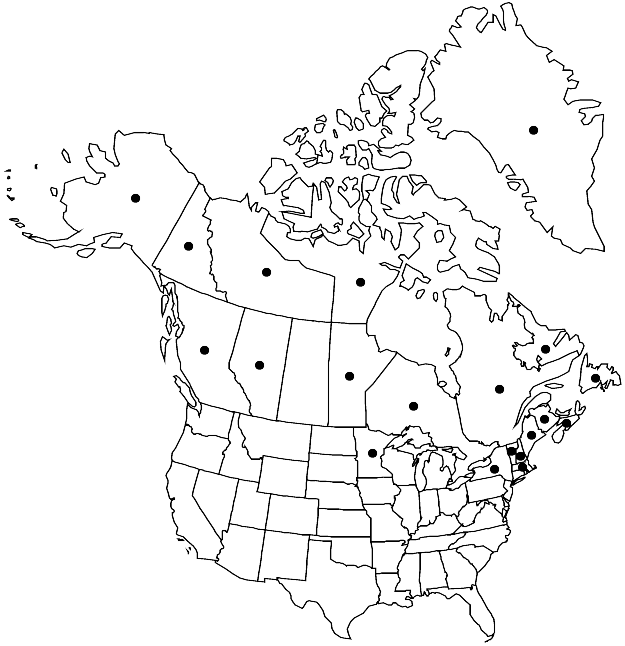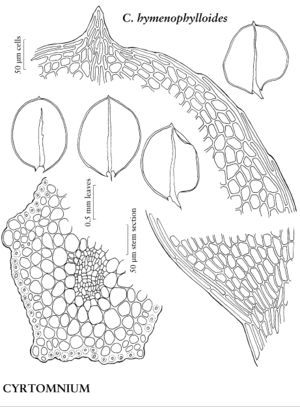Cyrtomnium hymenophylloides
Ann. Bot. Fenn. 5: 143. 1968.
Plants (0.5–)2–3 cm. Stems erect, arcuate, or ± plagiotropic, simple or irregularly and sparingly branched; micronemata present. Leaves crisped when dry, 1–2 mm; base not or short-decurrent; apex obtuse, rounded, or sometimes acute, apiculate; costa percurrent or subpercurrent; medial laminal cells (22–)25–35(–45) µm; marginal cells linear, sometimes short-linear, or rarely rhomboidal, in (1–)2–3 rows. [Capsule straight or cernuous; exostome lamellae 20. Spores 13–18 µm].
Phenology: Capsules mature summer.
Habitat: Dry or moist calcareous sites, rock ledges, crevices, under forest cover, in the Arctic on low hummocks in wetlands or in cracks in dry to mesic soil
Elevation: low to moderate elevations
Distribution

Greenland, Alta., B.C., Man., N.B., Nfld. and Labr., N.W.T., N.S., Nunavut, Ont., Que., Yukon, Alaska, Maine, Mass., Minn., N.H., N.Y., Vt., Eurasia.
Discussion
Cyrtomnium hymenophylloides is a circumpolar arctic-alpine(-montane) species, in North America restricted to glaciated terrain. It is present southward in mountainous areas and sometimes in the lowlands under temperate deciduous or mixed deciduous-coniferous forest on shaded gorge walls. The species is disjunct in low elevation sites in New York and New England. It sometimes grows in dense colonies but more often is found scattered among other bryophytes. The pseudodistichous leaf arrangement is expressed in mesic, shaded habitats, whereas leaves are often spirally arranged and contorted in drier fully illuminated sites; this latter expression may resemble small plants of C. hymenophyllum. The bluish green, apiculate, flat, ovate, not or short-decurrent leaves are diagnostic in the field. Sporophytes are unknown in North America. Male plants are rare (N. G. Miller and G. S. Mogensen 1997, 2000), whereas female plants occur throughout the range. Capsules and peristomes are poorly known and have been found once in Sweden (N. P. H. Persson 1915). The collection by Persson was reexamined by E. Nyholm (1954–1969, no. 2), who reported phaneropore stomata. Characteristics of the capsule, as presented here, are taken from Persson and Nyholm. A few adaxial stereids are shown in illustrations in T. J. Koponen (1993), and the authors have observed them in some leaf sections.
